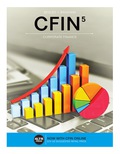
Concept explainers
Project risk should be considered in the capital budgeting decision. When a project is chosen, it is possible that the risk of the project is different from the firm’s average risk. Hence, it is essential to use the risk adjusted discount rate when evaluating a project. A risk adjusted discount rate is one in which he projects’ risk or the premium of taking the risk of that project is adjusted to the firm’s average risk. Average-risk projects are discounted at the average
Firstly, each project is classified in to three categories, high risk, average risk and low risk. Then the average required rate of return of the firm is used as the discount rate for average risk project, reduces the rate of return by 1-3 percent for low risk project and increases the discount rate accordingly for high risk projects. It is important to incorporate project risk in capital budgeting decision, or else one might end up making incorrect decision.
Following are the two mutually exclusive project which the company needs to evaluate. It usually does so by adjusting its average required rate of return, r of 15%. A high-risk project is adjusted for 5% and a low risk project is adjusted for 3%.
| Project | Risk | |
| X | 14.0% | Average |
| Y | 19.0% | High |
Want to see the full answer?
Check out a sample textbook solution
 Intermediate Financial Management (MindTap Course...FinanceISBN:9781337395083Author:Eugene F. Brigham, Phillip R. DavesPublisher:Cengage LearningPrinciples of Accounting Volume 2AccountingISBN:9781947172609Author:OpenStaxPublisher:OpenStax College
Intermediate Financial Management (MindTap Course...FinanceISBN:9781337395083Author:Eugene F. Brigham, Phillip R. DavesPublisher:Cengage LearningPrinciples of Accounting Volume 2AccountingISBN:9781947172609Author:OpenStaxPublisher:OpenStax College Essentials of Business Analytics (MindTap Course ...StatisticsISBN:9781305627734Author:Jeffrey D. Camm, James J. Cochran, Michael J. Fry, Jeffrey W. Ohlmann, David R. AndersonPublisher:Cengage Learning
Essentials of Business Analytics (MindTap Course ...StatisticsISBN:9781305627734Author:Jeffrey D. Camm, James J. Cochran, Michael J. Fry, Jeffrey W. Ohlmann, David R. AndersonPublisher:Cengage Learning



